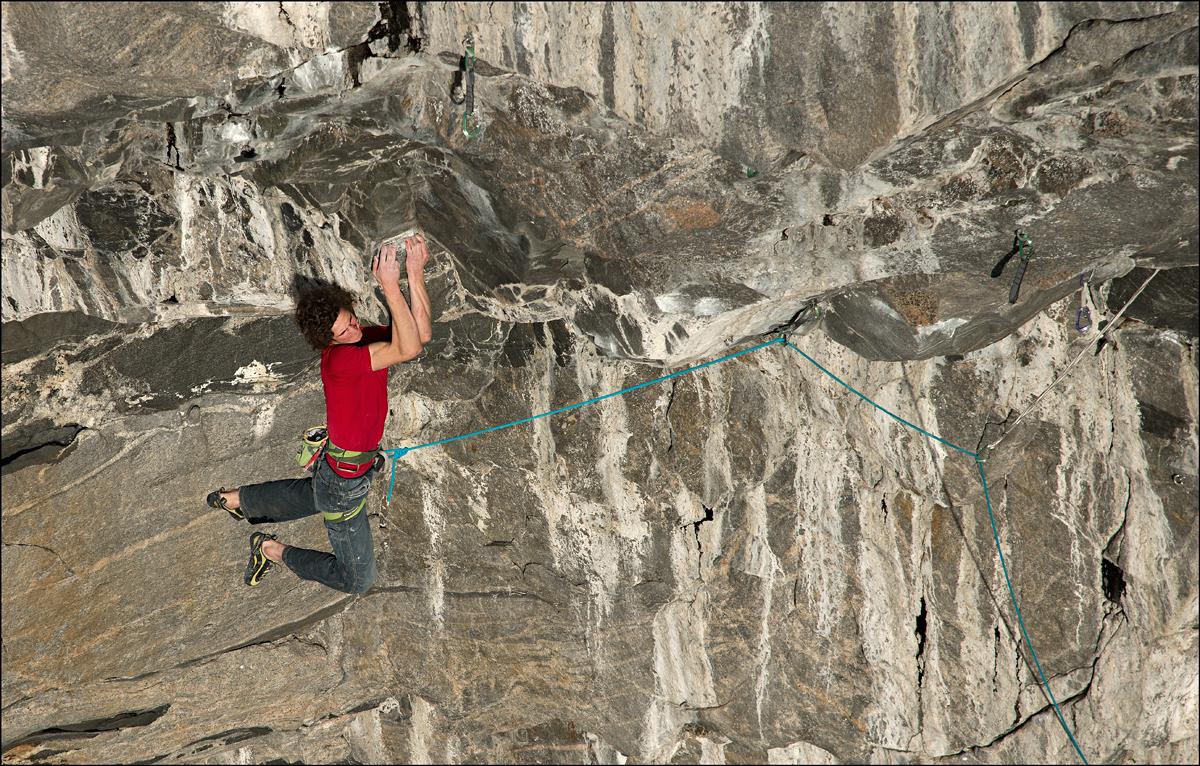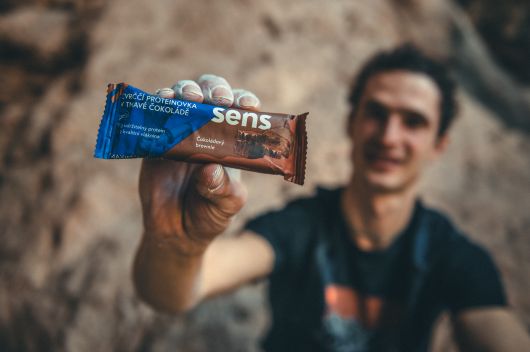Climbing ethics - Is chipping routes right or wrong?
Created by: Adam Ondra2021/08/31
I love being challenged by the nature that has been sculpting the rock faces of our planet for many centuries. Nature is the most superior route setter and I believe that even for contemporary route setters in the climbing gyms, nature is the source of their primary inspiration. But just like route setters in the gym, nature doesn’t always do the best possible job. Well, better said, the possible job from a climber's point of view. Some pieces of rock happen to have no holds at all, some happen to have possibly too many holds. Some rock is too sharp, some rock is too crumbly. But that is the way it is. But human’s will to conquer the summit, to siege an impossible-looking rock face, or in the more recent times, to put up a route of extreme grade, is always prone to change the rules of the game, the way the rock was prepared by nature.
If you have been climbing for a while, you must know that modification of the rock exists. It actually exists for as long as climbing exists. Getting to the top of the mountain or tower by any means, even though it meant altering the rock, cannot be that surprising. I would like to focus in this article on chipping, manufacturing, and reinforcing the rock in sport climbing.
Creating new lines by chipping as a natural temptation
Since the early boom of sport climbing in the early 80’s, chipping has gone through a lot of different stages. As the early sport climbing areas in Europe were developed on really high-quality rock, like Verdon or Buoux, there wasn’t really much need for reinforcement. The rock is mostly bullet-proof, requiring very little cleaning. But obviously, from time to time, you happen to find an amazing line where a few holds are missing, at least for a certain level of climbing. There is just a very natural temptation to take a chisel, chip a few holds, and the new line is born! You might do it in a way that will be very difficult to notice in the future. Some of the most famous routes in the world, like La Rose et Vampire 8b in Buoux (with the infamous “rose move”), are logical and mostly natural lines, but a few holds are modified.
The second stage is the development of steep terrain, alongside the boom of climbing in the gym. The competitors wanted to climb in the steep terrain. Once they were searching steep faces with good and solid rock, they were often pretty blank, offering no holds at all. The other alternative was going into the more featured steep walls, which are often much more crumbly, and in order to create a good route, it is very difficult without glue to reinforce the holds. Nevertheless, many famous routes from the era of the 90’s, the best example is Bronx 8c+ in Orgon, are completely manufactured. Some holds might be only reinforced, but some holds are completely artificial.
The bouldering boom has changed the essence of sport climbing
I believe that in the 90's, before the boom of bouldering, it was a common belief that the future of sport climbing lies in the resistance - just stacking a lot of difficult sections above each other with very poor rests. If you look at the most difficult routes in the vertical walls, it is easy to believe that you cannot really hang onto even smaller holds and the future is hanging in the overhang for eternity. The way to go was perfectly homogenous and super resistance-oriented climbs. But if those homogenous climbs are very rare to find on the rock, why not chipping some routes?
Bouldering back then was not a very big thing but once it boomed, it opened the door for harder and actually much more natural sport climbs. Doing hard moves was not only about holding tiny holds but rather about being more athletic. With a new perspective on what is possible with a bouldering base, we could see much more hard sport routes that had some hard boulder problems and that would have been considerably easier and more homogenous if a few holds had been chipped.
Chipping (even old school) climbing routes must stop
Situation today? Chipping is often seen as a thing of the past, but unfortunately, it is still present and it will definitely be an issue even in the future. I have nothing against climbing chipped routes from the past. They are part of climbing history and shouldn’t be changed, from a certain point of view. Unfortunately, there are still a lot of routes being put up every year with very obvious chipping. Even old-school, straightforward drilled pockets creating ladder-like climbs. I believe that is something that has to stop. I have a pretty strong opinion about it.
On the other hand, there are lots of cases where I do not have a strong opinion. Today, we often climb on bad and soft rock and it is often impossible to realize how bad the rock quality was once you see a well-developed crag after everything is cleaned. Santa Linya is a perfect example. Instead of drilling pockets into a blank wall, we use glue because it is often necessary to make nice and safe routes in the “choss” (the term for very bad rock). It is questionable whether it is worth it to make routes in the choss with a lot of glue. Is it possibly better just let the choss be choss? Having gained some experience, I believe it is usually worth it. Possibly even for environmental reasons - you don’t need to travel across the whole world to have a good climbing day.
To use as little glue as possible and use more “aggressive” ways of cleaning
I used to be a total purist - as little rock modification as possible. But what does it mean? Does it mean no brushing with a soft brush? Does it mean no chiseling of super sharp edges of the holds that would crumble after many years of climbing anyway? When is it OK to reinforce the hold? When is it dangerous? When it is not climbable if it falls down? Is it OK to reinforce a flake that falls down just when you touch it or when it has to hold the weight, but you have a feeling that after a few years it would break?
Myself, I have changed from a purist to more pragmatist over the years. Having climbed in many areas and seeing the evolution of those crags, putting up quite a few routes myself, I care more about leaving nice and safe routes and using more “aggressive” ways of cleaning. Without this practice, some areas would not exist or they would simply be not nice to climb. Take for example Margalef, one of the most famous climbing areas. All the pockets are extremely sharp there and without filing down the edges of the pockets, most routes would be just incredibly painful. With the use of glue, it is very difficult to draw the line between reinforcing holds (avoiding existing holds to break) and creating hold. My rule is to use as little glue as possible. Rather just try to get rid of all possible loose holds and reinforce something only when it is necessary, especially when I do not manage to “hammer down” or “crowbar out” certain loose blocks, yet it still feels loose and dangerous. “Reinforcing” a flake that barely holds its own weight is already creating an artificial hold for me. Nevertheless, putting up new routes is a lot of work and we should embrace all the guys and girls working hard at the crags, putting up routes that we all can be entertained by. On the other hand, it is a very difficult ethical question to set clear guidelines on what is OK and what isn’t OK when you put up a route.
Should El Capitan routes be considered chipped?
Ruining an amazing natural line by adding a few more holds is WAY worse than setting up a completely chipped line in an old chossy or 100% blank quarry. Actually, adding a few holds (by either gluing or chipping) should not be accepted, but it is still not that bad, because it is reversible from the climbing point of view, even though there will always be some scars. The worst is changing the existing holds. That is irreversible! Lots of routes that are old aid lines are climbable because of pin scars - little pockets created by the pins or pitons left by previous aid climbers. Should these routes be considered chipped? We are actually talking about all the routes on El Capitan. Is it OK to chip one hold to create a beautiful and homogenous 7b that a lot of climbers can enjoy instead of one move wonder 8b? My opinion is absolutely clear - it should be the latter option. Or instead of chipping a blank start into the route, making “jumar start” is a better option for me, just like a few routes in Flatanger. In Walkyries 8c, you jumar up a fixed rope, for about 6m and then you start climbing from an obvious hold. It is one of the most classic lines in Flatanger.
These are my opinions regarding chipping the routes. What is your opinion? Do you consider chipping right or wrong? What is your experience with chipped routes? Lets write that down below in to the comments.

_0.jpg)


